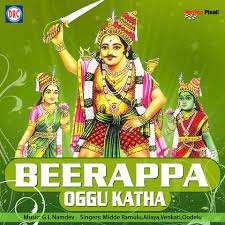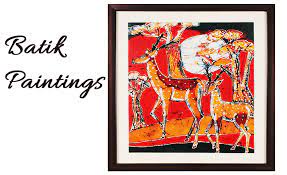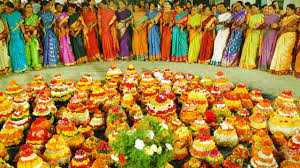Introduction
Culture and Tradition of Telangana
We are looking into this blog Culture and Tradition of Telangana Nestled in the southern part of India, Telangana is a region known for its lively traditions and culture that is deeply rooted. The amalgamation of various communities, languages, and beliefs has given birth to a unique culture and tradition of Telangana that is a testament to the rich history of the land. On this page, we dive into the many facets of the Telangana culture, which ranges from the traditional art forms to its beloved events and historical places.
In this blog, we delve into the multifaceted aspects of Telangana’s culture, ranging from its traditional art forms to its cherished festivals and heritage sites. Traditions of Telangana A Look into the past Traditions of Telangana Traditions of Telangana an intriguing tapestry that weaves the threads of culture, history and values.

Tradition of Telangana: A Glimpse into the Past

Tradition of Telangana, A peek into the ancient traditions that comprise the Telangana The traditions of Telangana is a fascinating tapestry weaving the threads of tradition, history, culture and values. Traditions of Telangana A Look into the past Traditions of Telangana The Telangana tradition is a fascinating tapestry weaved with the threads of culture, history and values.
1. Familial Values as Pillars of Tradition
In Telangana, family forms the cornerstone of society. Respect for elders and care for the younger generation are values deeply ingrained in the culture. The joint family system, though evolving with modern times, has left an indelible mark on the way people interact and support one another.
Example: The Joint Family System: In many rural areas of Telangana, joint families are still prevalent. Multiple generations living together under one roof not only strengthen family bonds but also uphold the traditional values of unity and cooperation.
2. Culinary Heritage and Traditional Practices
The traditional cuisine of Telangana is a reflection of its agrarian roots and diverse influences. Telangana’s culinary landscape is characterized by its use of millets, spices, and unique cooking techniques.
Example: Sarva Pindi: This traditional Telangana dish is a type of spiced rice pancake made with rice flour, chilies, and peanuts. It is often prepared during festivals and family gatherings, showcasing the significance of food in bringing people together.
3. Folk Arts and Oral Tradition
Storytelling is an important part of the Telangana culture. Through dances, folk songs and stories The tradition of the region has been handed through generations.
Examples: Oggu Katha: Oggu Katha is a popular art form that blends dancing, music and telling stories. The performers tell stories of mythology in a rhythmic setting engaging audiences and conserving old tales.
4. Community Festivals and Celebrations
Telangana’s tradition is vividly displayed during its festivals and celebrations, where the entire community comes together to rejoice in shared heritage.
Example: Samakka Sarakka Jatara: This tribal festival honors the valiant mother-daughter duo, Samakka and Sarakka. Millions of devotees gather at Medaram to pay homage, showcasing the unity and devotion that lie at the heart of Telangana’s tradition.
5. Handicrafts and Artisanal Skills
Artisans in Telangana have passed down their craft through generations, creating intricate and aesthetically pleasing handicrafts that reflect the region’s culture.
Example: Dokra Craft: The Dokra craft of Telangana involves the use of the lost-wax casting technique to create exquisite metal sculptures and jewelry. This art form not only showcases artistic prowess but also preserves the legacy of skilled craftsmanship.
6. Spiritual Diversity and Coexistence
Telangana is a long-standing melting pot of many beliefs and religions and has created an environment that is harmonious and respectful.
Examples: Makkah Masjid: The Makkah Masjid in Hyderabad stands as a symbol of religion tolerance and architectural beauty. It was constructed under the aegis by Muhammad Quli Qutb Shah, the creator of Hyderabad and the region, a reflection of its long-standing tradition of coexistence
7. Language and Dialects
The linguistic diversity of Telangana is another facet of its tradition. The region is home to various dialects and languages, each contributing to the cultural mosaic.
Example: Telangana Language: The Telangana dialect, known for its distinctive accent and vocabulary, reflects the region’s unique identity. It has found expression in literature, music, and films, preserving the linguistic tradition.
in this section we explore the tradition of telangana these examples, it becomes evident that Telangana’s tradition is a tapestry woven with threads of unity, respect, and celebration. The tradition continues to evolve, adapting to the changing times while holding onto its core values. In the next sections, we will delve deeper into the captivating art forms, heritage sites, and festivals that adorn the cultural landscape of Telangana.
Heritage of Telangana: A Glimpse into Architectural Marvels and Historical Legacy
Heritage of Telangana is a treasure trove of architectural wonders and historical landmarks that offer insights into the region’s glorious past. From imposing forts to intricate temples, each heritage site narrates a tale of bygone eras, dynasties, and cultural richness. Let’s embark on a journey through Telangana’s heritage, exploring its remarkable sites and the stories they tell.

1. Golconda Fort: Guardian of History
Overview: The Golconda Fort, located on a rocky hill in Hyderabad, stands as a sentinel to Telangana’s history and architectural prowess. Built during the Qutb Shahi dynasty, this fort is a symbol of grandeur and strategic brilliance.
Key Features:
- Ingenious Acoustics: Clapping your hands at the entrance gate can be heard clearly at the highest point, demonstrating the advanced architectural understanding of sound propagation.
- Innovative Water Supply System: The fort’s remarkable water supply system provided water to the entire complex, showcasing the engineering expertise of its time.
2. Charminar: A Timeless Icon
Overview: The Charminar, an iconic monument in Hyderabad, is a testament to the Qutb Shahi dynasty’s cultural and architectural achievements. This four-arched structure holds a central place in the city’s heart.
Key Features:
- Majestic Architecture: The symmetrical design, towering minarets, and intricate Islamic motifs showcase the architectural finesse of the Qutb Shahi era.
- Historical Significance: Charminar served as a ceremonial gateway to the city and a symbol of Hyderabad’s identity.
3. Warangal Fort: Echoes of Kakatiya Dynasty
Overview: The Warangal Fort, a masterpiece of Kakatiya architecture, bears witness to the rich history of the region. The fort complex houses impressive structures that reflect the grandeur of the Kakatiya dynasty.
Key Features:
- Thousand Pillar Temple: A prime example of Kakatiya architecture, this temple is adorned with intricate carvings that depict tales from Hindu mythology.
- Grand Gateways: The fort’s entrance gateways, with their imposing structure and artistic detailing, evoke a sense of awe and wonder.
4. Qutub Shahi Tombs: Where Royalty Rests
Overview: The Qutub Shahi Tombs complex in Hyderabad is the final resting place of the Qutb Shahi rulers. This majestic necropolis is a fusion of Persian and Indian architectural styles.
Key Features:
- Intricate Tombs: The tombs feature exquisite architecture with delicate stucco ornamentation and intricate marble inlay work.
- Historical Lineage: The tombs provide a glimpse into the lineage of the Qutb Shahi dynasty, each tomb representing the unique style of a ruler.
5. Thousand Pillar Temple: Architectural Marvel
Overview: The Thousand Pillar Temple in Warangal is a magnificent example of Chalukyan architecture. This temple complex is renowned for its intricate sculptures and massive granite pillars.
Key Features:
- Sculptural Details: The temple’s intricate carvings depict deities, dancers, and scenes from Hindu epics, showcasing the artistic excellence of the Chalukyan craftsmen.
- Monolithic Pillars: The temple’s monolithic pillars are a marvel of engineering and craftsmanship, each with its distinct design.
6. Ramappa Temple: Epitome of Beauty
Overview: The Ramappa Temple, also known as the Ramalingeswara Temple, is a UNESCO World Heritage Site known for its exceptional architecture and sculptural finesse.
Key Features:
- Floating Brick Technique: The temple’s main hall was constructed using a unique technique where bricks were placed in water, and only those that floated were used, demonstrating advanced architectural understanding.
- Intricate Carvings: The temple is adorned with intricate carvings that depict various aspects of life and mythology, reflecting the artistic brilliance of the era.
7. Kulpakji Jain Temple: Spiritual Serenity
Overview: The Kulpakji Jain Temple, nestled amidst the hills of Yadagirigutta, is a renowned pilgrimage site for Jains. The temple’s exquisite architecture and serene surroundings draw devotees and tourists alike.
Key Features:
- Intricate Marble Carvings: The temple’s intricate marble carvings narrate stories from Jain scriptures, showcasing the devotion and craftsmanship of its creators.
- Idol of Lord Adinatha: The temple houses a 2.4-meter-tall black idol of Lord Adinatha, attracting pilgrims from across the country.
While exploring these incredible historic sites, we gain more appreciation for Heritage of Telangana, its rich architectural heritage and historical diversity. Each monument is a testament of the rich past of the region, as well as its artistic awe and passion for the arts. These sites of historical significance do not only have a visual appeal however, they also function as a bridge to connect the past and present, connecting us back to the stories of the past.
Art Forms of Telangana: Unveiling the Beauty of Creativity
Art forms of Telangana,cultural canvas is adorned with a plethora of captivating art forms, each a unique expression of creativity and tradition. From intricate handicrafts to dynamic dance forms, the state’s artistic heritage reflects its history, beliefs, and aesthetic sensibilities. Let’s embark on a journey through the enchanting world of Telangana’s art forms, appreciating the craftsmanship and ingenuity behind each creation.

1. Tella Cheera Kala: Intricacy on White Canvas
Overview: The Tella Cheera Kala is also referred to for its art form of painting on white sheets is a classic type of art that involves embellishing the white fabric with elaborate patterns and designs. This art form is often associated with festivals, weddings, and other celebratory occasions.
Key Features:
- Intricate Designs: Artisans skillfully hand-paint elaborate patterns using bright and vibrant colors, creating a stunning contrast against the white background.
- Symbolism and Imagery: The designs often depict traditional motifs, flowers, birds, and geometrical patterns, representing auspiciousness and joy.
2. Batik: Artistry on Fabric
Overview: Batik is a form of fabric art that involves applying wax and dye to create intricate patterns and designs on cloth. It is a form of resist dyeing where the wax acts as a barrier to prevent certain areas from being dyed.
Key Features:
- Wax-resist Technique: Artisans use a combination of melted wax and dye to create beautiful and intricate designs on textiles.
- Vibrant Colors: Batik textiles are known for their vibrant and rich colors, making them highly attractive and visually appealing.
3. Golconda Nirmal Craft: Woodwork and Painting in Harmony
Overview: The Golconda Nirmal Craft is a traditional art form that combines intricate woodwork with vibrant painting. It originates from the town of Nirmal and is known for its wooden articles adorned with detailed paintings.
Key Features:
- Wooden Creations: Artisans create a wide range of items, including furniture, toys, trays, and boxes, using techniques like lacquering and wood carving.
- Exquisite Painting: The wooden articles are adorned with elaborate and colorful paintings, often depicting scenes from mythology and nature.
4. Perini Sivatandavam: Dynamic Dance of Devotion

Overview: Perini Sivatandavam is a classical dance form that originated in the Kakatiya dynasty. It is a dynamic and vigorous dance performed as an invocation to Lord Shiva.
Key Features:
- Rhythmic Footwork: Performed with intricate footwork and rhythmic movements, the dance is characterized by its energetic and dynamic nature.
- Spiritual Expression: The dance is a powerful blend of devotion and artistic expression, with performers embodying the essence of Lord Shiva’s cosmic dance.
5. Cheriyal Scroll Painting: Stories on Canvas
Overview: Cheriyal Scroll Painting is a traditional storytelling art form that involves creating vibrant and detailed narrative paintings on scrolls. These paintings often depict mythological tales and folk stories.
Key Features:
- Narrative Art: Each scroll tells a story through a series of panels, with characters and scenes beautifully painted to capture the essence of the tale.
- Traditional Colors: Cheriyal paintings are characterized by the use of bright and vivid colors, making them visually striking and captivating.
6. Bathukamma Folk Art: Celebrating Womanhood

Overview: Bathukamma, a traditional floral festival celebrated by women, involves creating vibrant flower arrangements in the form of colorful stacks. The art of Bathukamma embodies the spirit of unity and celebration.
Key Features:
- Floral Arrangements: Women create intricate and elaborate flower stacks, often consisting of various seasonal flowers and leaves.
- Cultural Significance: Bathukamma is not only an art form but it is also an event that celebrates the significance of women’s roles as well as nature and community.
As we travel through the the artistic expressions of Telangana We learn to appreciate the many forms of beauty beautiful, as well as the significance of their culture for the region. Each art forms of Telangana is a testimony to the artistry and creativity that has been passed down through generations, maintaining the long-standing traditions of Telangana’s culture heritage.
Conclusion
Telangana and it’s intricate woven tapestry artistic styles as well as heritage sites and traditional practices, stands as an evidence of the depth and diversity of India’s diverse culture. From the graceful movements of Perini Sivatandavam to the vibrant strokes of Tella Cheera Kala, the region’s artistic expressions breathe life into its history and beliefs. The majestic Golconda Fort, the timeless Charminar, and the captivating Cheriyal Scroll Paintings transport us to eras gone by, while the spirited celebrations of Bathukamma and the profound devotion of Kulpakji Jain Temple remind us of the continuing vitality of Telangana’s culture.

What a fascinating insight into the culture and traditions of Telangana! I love how you’ve delved into the rich tapestry of customs, festivals, and rituals that make this region so unique. It’s evident that Telangana has a deep-rooted heritage worth celebrating and preserving. Your blog beautifully captures the essence of this vibrant culture, leaving me eager to learn even more. Thank you for sharing such valuable knowledge!
Thanks for your visit and valuable comments. Please do visit and share your thoughts on my other blogs also.
Thanks for your visits and valuable comments really appreciate.